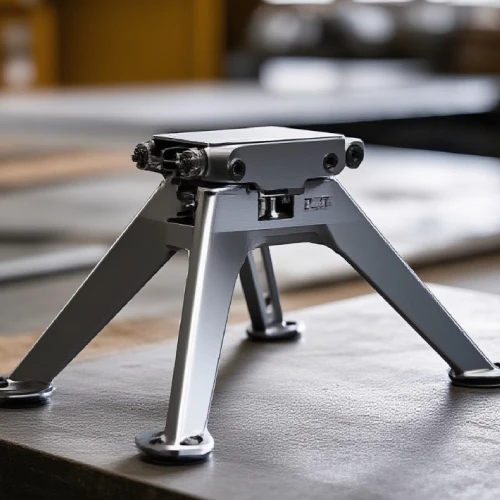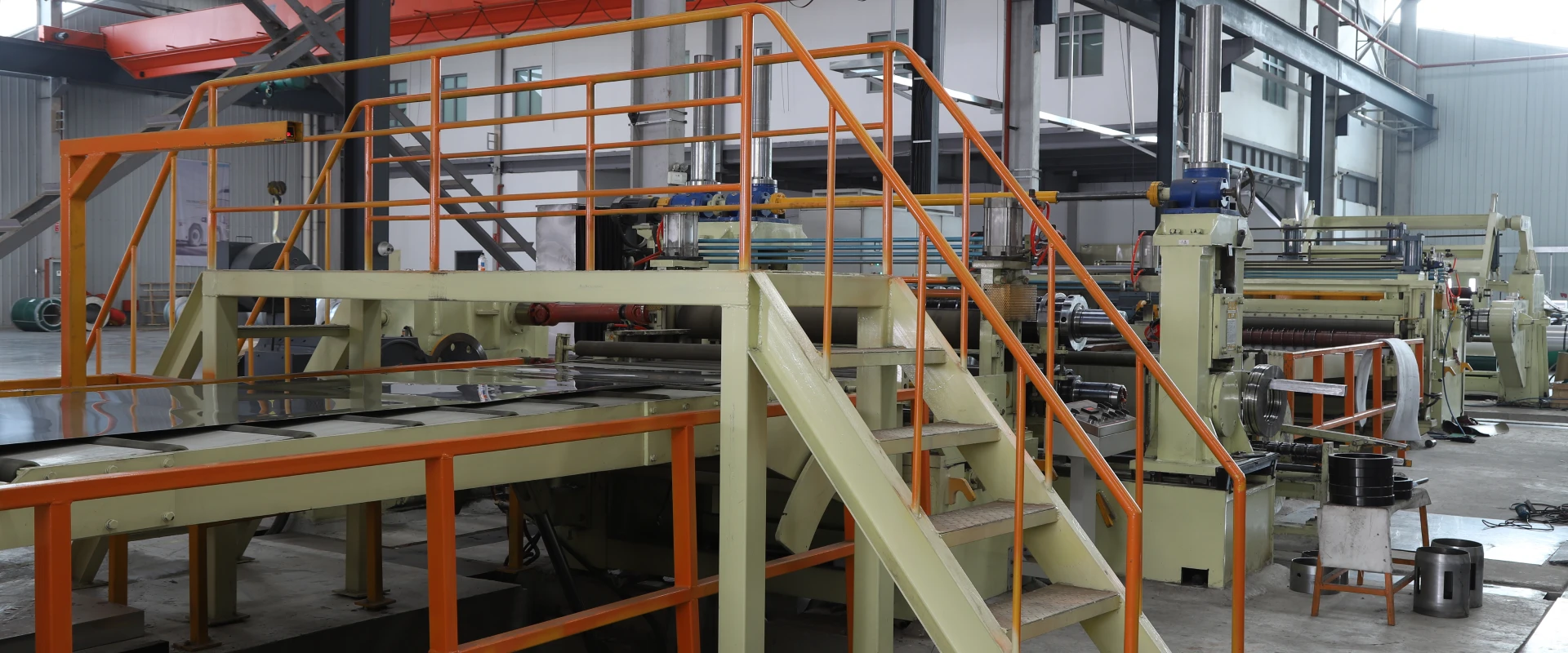TC4 Titanium Alloy Angle: Drone Landing Gear Welding Strength & Lightweight Balance
Welding Strength and Lightweight Balance of TC4 Titanium Alloy Angle Steel in Drone Landing Gear
A drone’s landing gear is a study in contradictions. It must be strong enough to absorb the impact of landing—sometimes from heights of 3 meters or more—yet light enough to not drain battery life or slow flight. For engineers, finding that balance is key, and TC4 titanium alloy angle steel has emerged as a game-changer. With its unique mix of strength and low weight, this material (a titanium alloy with 6% aluminum and 4% vanadium) is ideal for landing gear frames. But here’s the catch: joining TC4 angle pieces with welds can either weaken the structure or add excess weight if done poorly. Getting the welding right—strong enough to handle impacts but minimal enough to keep weight down—is the secret to making TC4 landing gear perform at its best. Let’s break down how engineers balance these two critical factors, why TC4 is the material of choice, and what real-world results look like.

Why TC4 Titanium Alloy Angle Steel for Drone Landing Gear
Drones, whether carrying cameras, packages, or scientific equipment, live and die by their weight-to-strength ratio. A heavy landing gear forces the drone to use more power to stay aloft, reducing flight time. A weak one risks collapse on landing, damaging the drone and its payload. TC4 titanium alloy angle steel solves both problems:
Strength: TC4 has a tensile strength of 900–1.100 MPa—stronger than most aluminum alloys (which top out around 600 MPa) and even some steels, but at a fraction of the weight. This means a TC4 angle frame can withstand the jolt of landing without bending or cracking.
Lightweight: At 4.5 g/cm³, TC4 is about half the weight of steel (7.8 g/cm³) and 60% the weight of copper alloys. For a typical commercial drone, switching from steel to TC4 landing gear can cut 200–300 grams—enough to extend flight time by 10–15 minutes.
Corrosion Resistance: Unlike steel, TC4 doesn’t rust, making it ideal for drones used in rainy or coastal areas. A surveying drone company found their TC4 landing gear lasted 3x longer in saltwater environments than aluminum ones.
The angle shape adds another layer of efficiency. The L-shaped cross-section—say, 20mm x 20mm legs with a 2mm thickness—distributes weight evenly while providing rigidity where it’s needed most. “The angle design lets us use less material while maintaining strength,” explains a drone designer. “It’s like building a bridge with triangles—geometry does half the work.”
The Welding Challenge: Strength vs. Weight
Welding TC4 titanium alloy isn’t like welding steel or aluminum. The metal reacts strongly with oxygen at high temperatures, forming brittle oxides that weaken welds. To avoid this, welders must work in a protective atmosphere (usually argon gas) to keep oxygen out. But even with perfect technique, every weld adds some weight and creates a “heat-affected zone” (HAZ)—an area around the weld where the metal’s structure changes, potentially reducing strength.
This creates a balancing act:
Too Much Weld: A large, heavy weld might be strong, but it adds unnecessary weight. A drone with over-welded landing gear could see flight time drop by 5+ minutes.
Too Little Weld: A small, lightweight weld might save weight but fail on impact. One testing facility found that undersized welds on TC4 landing gear cracked 70% of the time during hard landings.
HAZ Management: The heat from welding can soften TC4 in the HAZ, making it 10–15% weaker than the base metal. Engineers must limit HAZ size to keep the entire structure strong.
“A bad weld on landing gear is worse than no weld at all,” says a manufacturing engineer. “It gives a false sense of security. The gear looks solid, but it’ll fail when you need it most.”
Welding Techniques for TC4 Angle Steel Landing Gear
To strike the right balance, engineers use specialized welding methods tailored to TC4:
1. Gas Tungsten Arc Welding (GTAW/TIG)
This method uses a non-consumable tungsten electrode and argon shielding gas to create clean, precise welds. It’s the most common choice for TC4 landing gear because:
Control: Welders can adjust heat input to minimize the HAZ. For 2mm thick TC4 angle steel, a low amperage (80–100 amps) and fast travel speed (50–100 mm/min) keep the HAZ under 1mm wide.
Strength: GTAW produces welds with 90% of the base metal’s strength—strong enough for most drone landing gear. A delivery drone manufacturer uses GTAW and reports just 2% weld failures in 5.000+ test landings.
2. Electron Beam Welding (EBW)
For high-performance drones (like those used in military or industrial inspections), EBW offers even better precision. It uses a high-energy electron beam to melt metal in a vacuum, avoiding oxygen entirely:
Minimal HAZ: The beam’s narrow focus limits heat spread, keeping the HAZ to 0.5mm or less. This preserves the TC4’s strength in critical areas.
Lightweight Welds: EBW creates narrow, deep welds that are stronger per gram than GTAW welds. A drone with EBW-welded landing gear weighs 5–10% less than one with GTAW welds, with no loss in strength.
The downside? EBW equipment costs 5x more than GTAW setups, making it impractical for small-scale manufacturers. “We reserve EBW for our premium drones,” says a production manager. “The weight savings justify the cost for customers who need maximum flight time.”
Design Tips to Balance Strength and Weight
Welding technique is only part of the solution. Smart design choices help reduce the need for heavy welds:
Optimize Angle Dimensions: Thicker legs (3mm vs. 2mm) add strength but increase weight. Engineers use computer simulations to find the sweet spot. For a 5kg drone, 2mm thick TC4 angles with 15mm legs provide enough strength with minimal weight.
Reduce Weld Points: By designing landing gear with fewer joints, engineers cut down on welds. A one-piece angle frame (bent instead of welded) needs just 2 welds instead of 4. saving weight and reducing failure risks.
Reinforce Strategic Areas: Adding a small gusset (a triangular piece of TC4) at stress points (like where the landing gear meets the drone body) lets welds be smaller while still handling impact. A agricultural drone company used this trick to reduce weld weight by 15% without losing strength.
“ It’s not just about welding better—it’s about welding less,” says a design engineer. “Every weld we can eliminate makes the gear lighter and stronger.”
Real-World Testing: Does the Balance Hold?
Drone manufacturers put TC4 landing gear through rigorous tests to ensure the weld strength and weight balance works in practice:
Drop Tests: Drones are dropped from 3m onto concrete with various payloads. A well-designed TC4 landing gear with optimized welds should survive 50+ drops without weld cracks. One test showed that GTAW-welded TC4 gear outperformed aluminum gear by 3x in drop test durability.
Fatigue Tests: Landing gear is repeatedly loaded with 1.5x the drone’s weight to simulate thousands of landings. TC4 welds typically show signs of fatigue after 10.000 cycles—enough for years of normal use. Steel gear lasts longer but adds 300+ grams.
Flight Tests: Drones with TC4 landing gear are flown to measure battery life. A 5kg drone with properly welded TC4 gear flies 18–20 minutes, vs. 15–16 minutes with steel gear and 16–17 minutes with over-welded TC4 gear.
“ Our field tests proved the balance works,” says a drone pilot for a surveying company. “The TC4 landing gear takes hard landings in rough terrain, and we still get enough flight time to finish our mapping jobs.”
Common Mistakes to Avoid
Even with good materials, poor choices can throw off the balance:
Over-Welding for “Safety”: Some manufacturers add extra weld material, thinking it makes the gear stronger. But this adds weight and creates larger HAZs, weakening the structure. A delivery drone company had to recall a batch of over-welded TC4 landing gear after welds cracked—ironically, due to the extra heat from excess welding.
Ignoring HAZ: Failing to control heat during welding can leave large, weak HAZs. A hobby drone manufacturer learned this the hard way when 30% of their TC4 landing gear failed in early use—the HAZ areas had softened and bent on impact.
Mismatched Materials: Welding TC4 to aluminum (to save weight) creates brittle intermetallic compounds. All TC4 landing gear components should be TC4 to ensure strong welds.
Cost Considerations: Is TC4 Worth It?
TC4 titanium alloy costs more than aluminum or steel—about
30–40 per kg vs. 2–5 for steel and 3–8 for aluminum. Welding TC4 also requires more skill and equipment, adding to production costs. But the benefits often justify the expense:
Longer Flight Time: For commercial drones, every extra minute of flight time means more work done per battery charge. A delivery service calculated that TC4 landing gear let them make 1–2 more deliveries per day per drone.
Durability: TC4 landing gear needs replacement 2–3x less often than aluminum gear, reducing maintenance costs. A agricultural drone fleet saved $10.000+ yearly by switching to TC4.
Payload Capacity: The weight saved with TC4 lets drones carry larger cameras, sensors, or packages. A news drone with TC4 gear can carry a heavier 4K camera without sacrificing flight time.
“ The upfront cost is higher, but the total cost of ownership is lower,” says a drone fleet manager. “TC4 pays for itself in performance and longevity.”
Future Trends in TC4 Landing Gear Design
As drones become more capable, TC4 landing gear design is evolving:
Laser Welding: New laser welding systems offer even more precise heat control, reducing HAZ size to 0.3mm. Early tests show laser-welded TC4 landing gear is 5% lighter with 10% stronger welds than GTAW versions.
Topology Optimization: 3D modeling software now designs landing gear with “organic” shapes, using TC4 angle steel only where needed. This reduces material use and weld points, further cutting weight.
Additive Manufacturing: 3D-printed TC4 landing gear with integrated welds (no separate pieces) is being tested. This eliminates most welds, though 3D-printed TC4 currently costs more than welded angle steel.
Why the Balance Matters for Drone Performance
A drone’s landing gear is its unsung hero. It doesn’t capture footage or fly the drone, but without the right balance of strength and weight, nothing else works. TC4 titanium alloy angle steel, when welded properly, delivers that balance—letting drones fly longer, land harder, and last longer.
“ Drones are all about trade-offs,” says a drone engineer. “You want more payload, longer flight time, and durability. TC4 landing gear with optimized welds lets you have all three—no compromises.”
For drone manufacturers and users, the message is clear: investing in TC4 titanium alloy angle steel and proper welding techniques isn’t just about using a premium material. It’s about building drones that perform better, last longer, and do more—whether they’re delivering packages, surveying land, or capturing stunning aerial photos. As one designer puts it: “The best drone is one that you don’t worry about. With TC4 landing gear, we can focus on what the drone does, not whether it will survive landing.”

